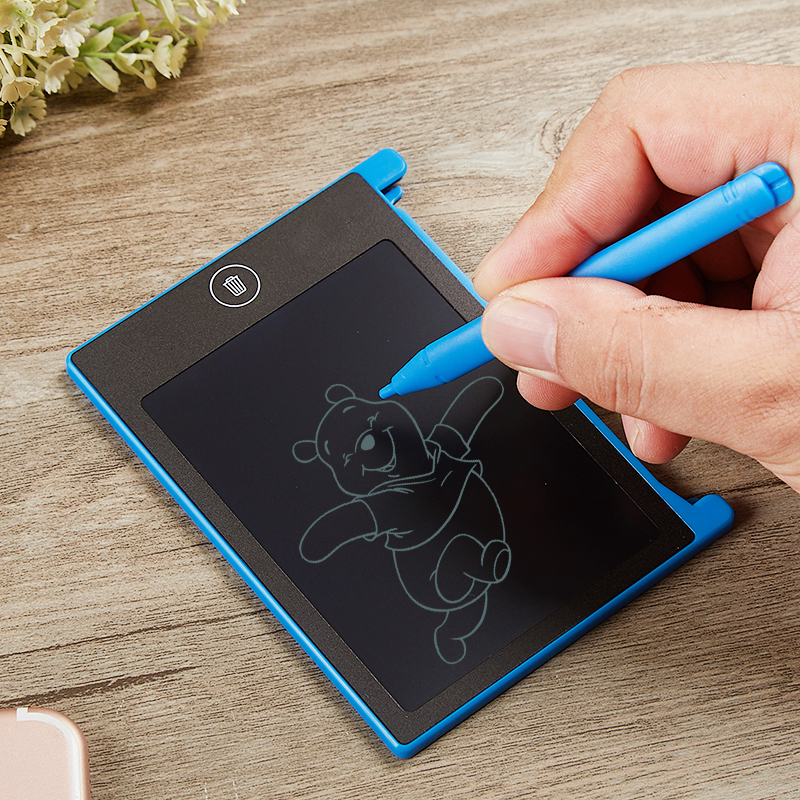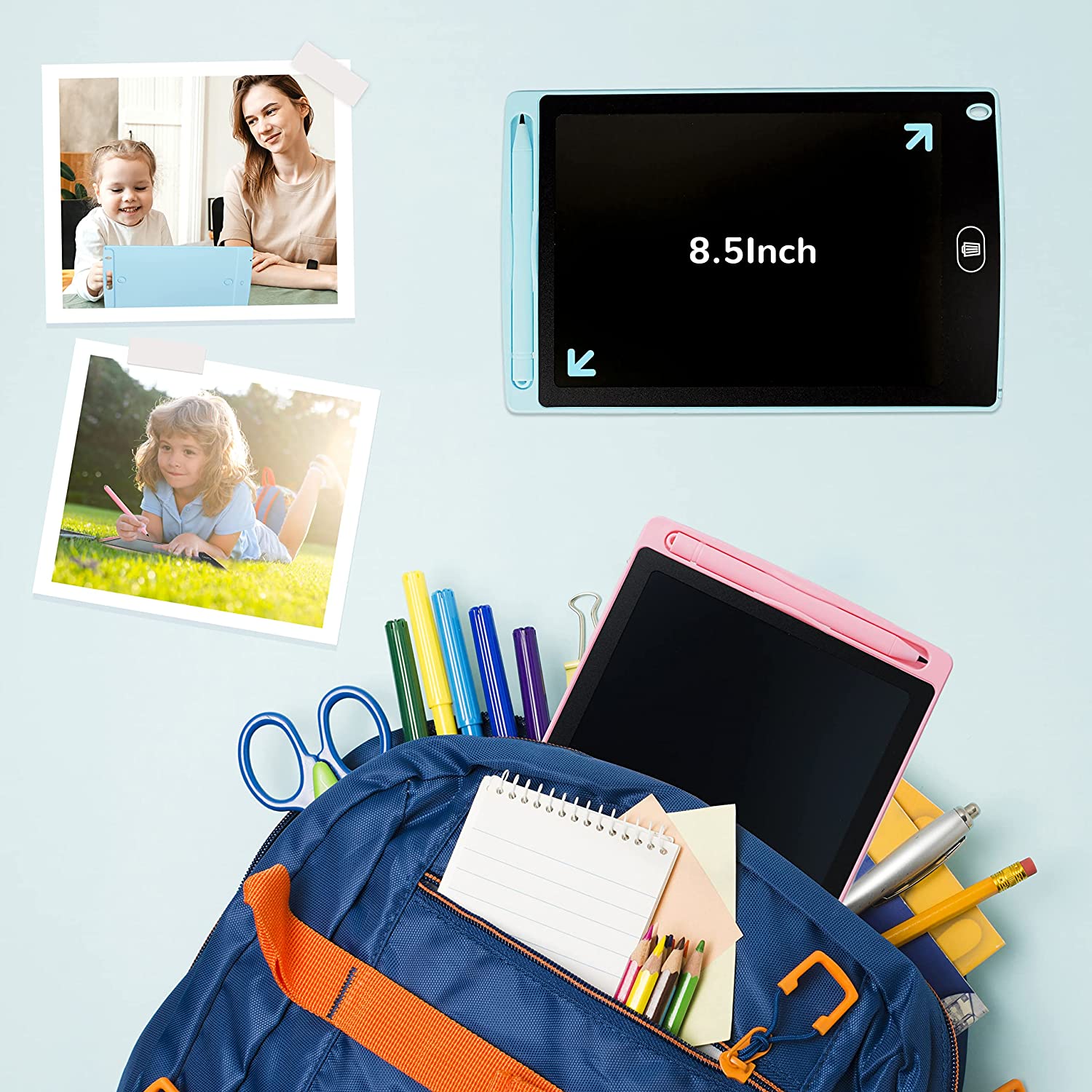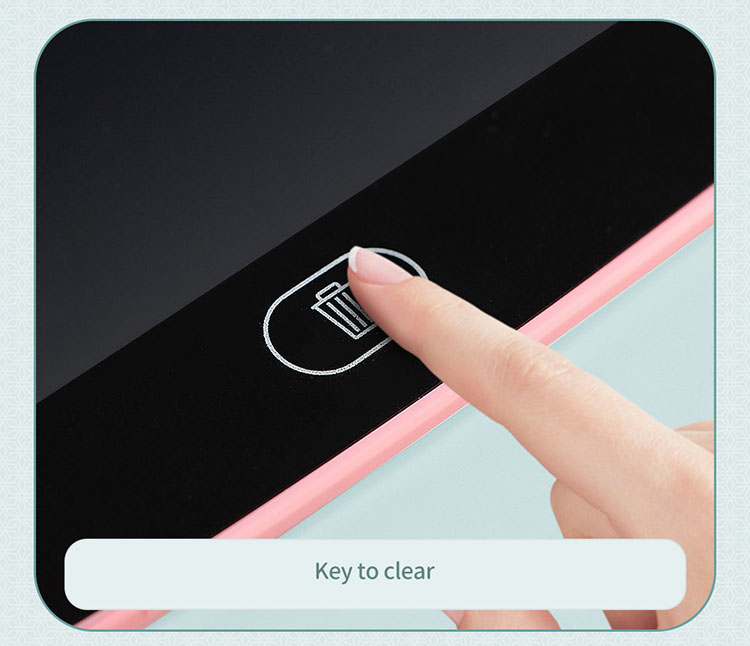Tired of wasting paper for temporary notes? LCD writing tablets offer a simple and eco-friendly way to jot down ideas, lists, and reminders without wasting a single sheet.
LCD writing tablets are great for quick notes, sketches, and lists. They save paper and erase instantly with a single button press. These tablets are perfect for kids, offices, and anyone needing a reusable writing space without the waste.
I discovered LCD writing tablets when searching for ways to reduce paper waste in my office. These handy devices quickly became essential tools for my daily work and home life. Let me share what makes them so useful and how they can benefit you.
What are the benefits of LCD writing tablet?
Do you struggle with paper clutter or feel guilty about throwing away notes? LCD writing tablets eliminate these problems with their reusable surface and eco-friendly design.
The biggest benefit of LCD writing tablets is their environmental impact1. One tablet can replace thousands of paper sheets over its lifetime, significantly reducing waste and saving trees. They also eliminate the need for pens, pencils, and markers that eventually end up in landfills.
When I started using LCD tablets in my company meetings, I noticed immediate benefits beyond just reducing paper use. The technology behind these devices is both simple and practical, making them suitable for various situations. LCD writing tablets use pressure-sensitive liquid crystal display technology2 that changes color when pressed with a stylus. Unlike traditional tablets, they consume minimal power, with most models using a small button battery that can last for months or even years.
These tablets come in various sizes, from pocket-sized 3-inch models perfect for quick notes to larger 15-inch versions ideal for detailed drawings or classroom use. Many feature different writing colors and pressure sensitivities, allowing for varied line thickness. Some advanced models even offer partial erasing capabilities, cloud backup, or smartphone connectivity.
Comparison of LCD Writing Tablets vs. Traditional Methods
| Feature | LCD Writing Tablet | Paper | Digital Tablet |
|---|---|---|---|
| Reusability | High (thousands of uses) | None | High |
| Power Requirements | Minimal (button battery) | None | High (regular charging) |
| Environmental Impact | Very Low | High | Medium |
| Cost Over Time | Low ($15-50 initial) | High (ongoing) | High ($300+ initial) |
| Tactile Feel | Similar to paper | Natural | Variable |
| Data Backup | Limited/None | None | Comprehensive |
What is the use of LCD tablet?
Are you wondering about the practical applications of these tablets? LCD tablets serve numerous purposes in both professional and personal settings.
LCD tablets are ideal for temporary note-taking, quick sketches, math calculations, and message boards. They provide a writing experience similar to pen and paper but with the convenience of instant erasure and reuse.
I’ve found LCD tablets to be incredibly versatile tools that adapt to different environments and needs. In my home, we keep one on the refrigerator as a family message board, and I have a smaller one in my pocket for grocery lists. The applications are nearly endless once you start using them regularly.
For businesses, these tablets offer significant cost savings over time. Consider a typical office that might use several notepads per employee annually. By switching to LCD tablets, companies can eliminate this recurring expense while also promoting their environmental values. Many of my clients have implemented these tablets in their meeting rooms, reducing note-taking waste by over 90%.
Educational settings benefit tremendously from LCD tablets as well. Children can practice writing, drawing, and arithmetic without consuming paper. Teachers can quickly check work and have students erase and try again, creating an efficient learning cycle. Some schools I’ve worked with have reported saving thousands of dollars in paper and art supplies after adopting these tablets for certain activities.
Popular LCD Tablet Uses by Sector
| Sector | Common Uses | Benefits |
|---|---|---|
| Business | Meeting notes, quick calculations, temporary planning | Reduced waste, professional appearance, instant erasure |
| Education | Practice writing, math problems, drawing | Reusable surface, engaging for children, cost savings |
| Home | Shopping lists, family messages, children’s entertainment | Convenience, reduces paper clutter, always available |
| Personal | To-do lists, brainstorming, sketching | Portability, no need for multiple notebooks, eco-friendly |
What is the purpose of a writing pad?
Have you ever needed to jot something down quickly but couldn’t find paper or a working pen? Writing pads solve this daily frustration with their always-ready surface.
The purpose of a writing pad is to provide an instantly available surface for recording temporary information, messages, or creative ideas without the waste of traditional paper or the complexity of digital devices.
In my daily routine, I’ve come to rely on my LCD writing pad as an extension of my memory. Our brains aren’t designed to store every piece of information we encounter, and having a reliable tool to quickly offload thoughts can significantly improve productivity and reduce stress.
Traditional notepads serve a similar purpose but come with several drawbacks. Once you tear off a sheet, it often becomes clutter until properly disposed of. Digital note-taking apps on smartphones or tablets provide excellent storage but can be distracting with notifications and require battery power and startup time. LCD writing tablets bridge this gap perfectly.
I especially appreciate the distraction-free nature of LCD writing pads. Unlike digital alternatives, there are no notifications, apps, or internet connections to pull your attention away from the task at hand. This makes them particularly valuable for focused work or creative thinking sessions.
For children, writing pads serve another crucial purpose: developing fine motor skills and creativity without screens or mess. Many parents I know keep LCD tablets in their cars, restaurants, and waiting rooms to keep children engaged productively. The instant erasure feature encourages experimentation and reduces the fear of making mistakes that some children experience with permanent media.
Writing Pad Applications Across Age Groups
| Age Group | Primary Uses | Key Benefits |
|---|---|---|
| Children (3-10) | Drawing, letter practice, games | Develops motor skills, screen-free entertainment, no mess |
| Students (11-22) | Note-taking, math work, diagrams | Portable, economical, environmentally friendly |
| Adults (23-65) | Lists, meeting notes, planning | Always ready, professional, reduces paper waste |
| Seniors (65+) | Reminders, communication, puzzles | Easy to use, high contrast display, no ink or supplies needed |
What is the advantage of the writer’s tablet?
Looking for a writing solution that combines the best of both digital and analog worlds? Writer’s tablets offer unique advantages that neither paper nor complex digital devices can match.
The main advantage of a writer’s tablet is its perfect balance of simplicity and functionality. It combines the natural feel of writing on paper with the convenience of digital erasability, without requiring charging, software updates, or complex interfaces.
From my experience working with various writing tools, LCD writer’s tablets stand out for their remarkable practicality. The technology is intentionally simple, eliminating many of the pain points associated with both paper and digital alternatives.
Battery life is perhaps one of the most underrated advantages of these devices. While most digital tablets require regular charging, LCD writing tablets use minimal power only when erasing the screen. The button cell batteries typically last 1-2 years with regular use, making them essentially a "set and forget" technology. I’ve had tablets that lasted over 18 months of daily use on a single battery.
The physical durability of these tablets is another significant advantage. Most models feature a sturdy plastic construction that can withstand being tossed in bags, dropped occasionally, or handled by children. Without complex components like glass touchscreens or fragile electronics, they have fewer points of failure than digital tablets.
Cost efficiency extends beyond the initial purchase. Since LCD tablets don’t require apps, subscriptions, upgrades, or accessories beyond occasional battery replacement, their total cost of ownership is remarkably low. For businesses implementing them at scale, this predictability is valuable for budgeting.
LCD Tablet Advantages by Feature
| Feature | Advantage | Real-World Benefit |
|---|---|---|
| Battery Life | 1-2 years on a single coin battery | No charging cables, always ready to use |
| Durability | Resistant to drops, pressure, and temperature | Lower replacement rate, suitable for travel |
| Writing Feel | Pressure-sensitive with tactile feedback | Comfortable, natural writing experience |
| Visibility | High contrast, viewable in bright light | Can be used outdoors unlike many screens |
| Simplicity | One-button operation, no menus | No learning curve, accessible to all ages |
| Portability | Lightweight (typically 4-12 oz) | Easy to carry in bags, pockets, or cases |
Conclusion
LCD writing tablets offer an eco-friendly, cost-effective, and practical solution for daily writing needs. They bridge the gap between traditional paper and complex digital devices, providing the best of both worlds with
You may also be interested in:
Contact Us
Phone
+86 18975761579Website
ruiyiboard.comAddress
Shenzhen Longhua, Guangdong, China
Shenzhen Ruiyi Plastic Products Co., Ltd. is a professional manufacturer focused on eco-friendly writing products since 2016.
Our mission is to provide paper-free, ink-free, safe and environmentally friendly electronic writing solutions.





